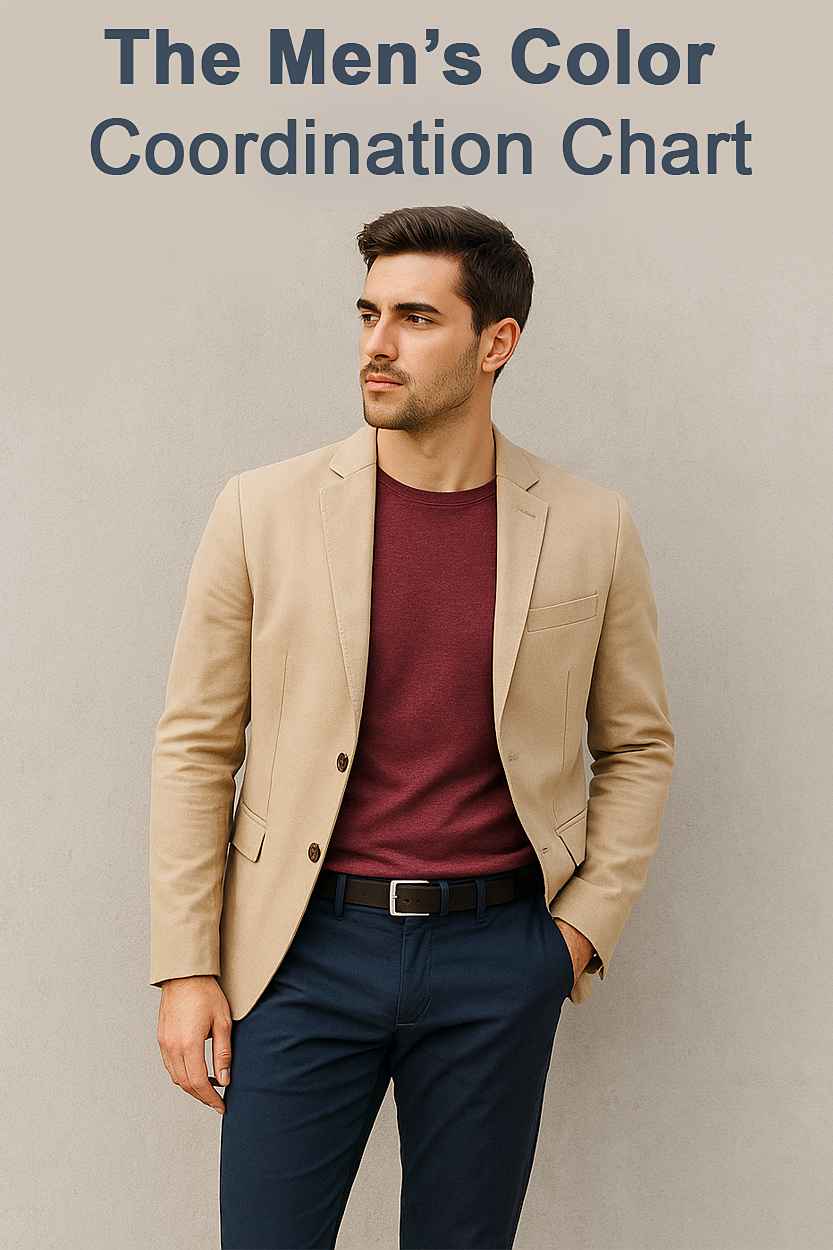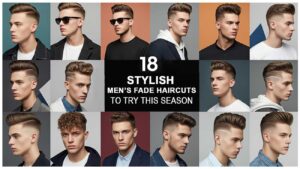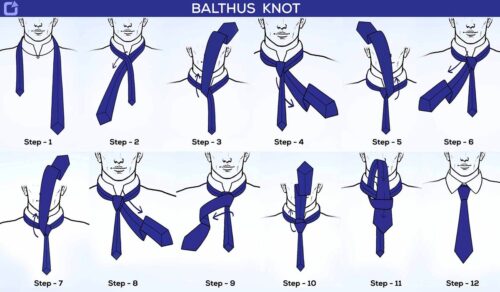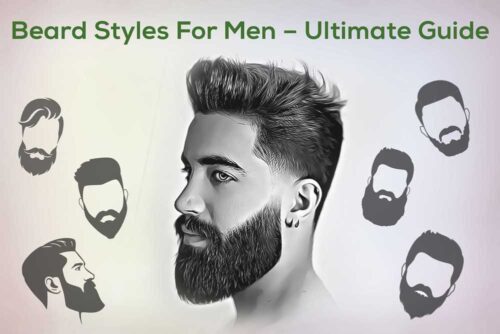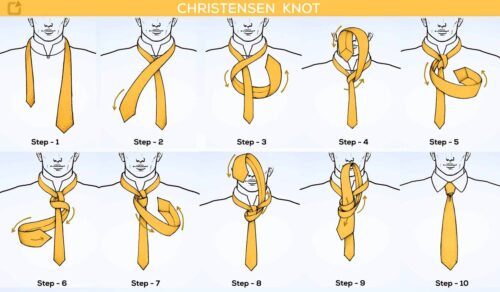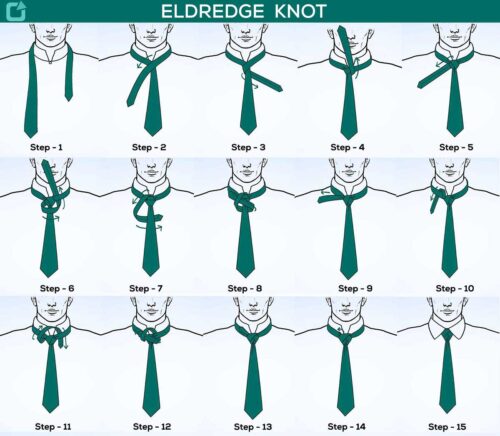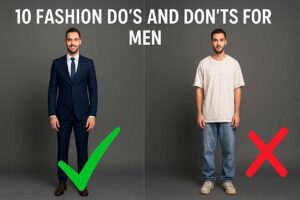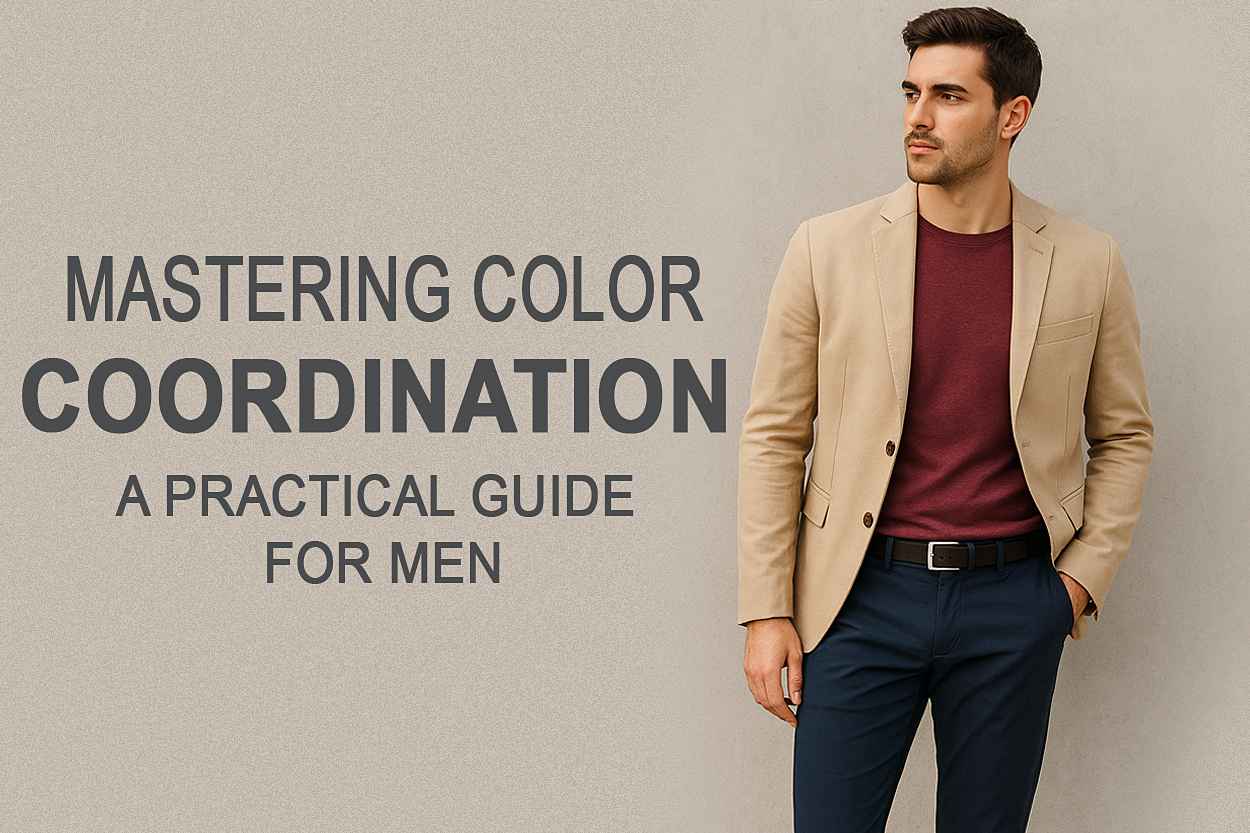
Mastering Color Coordination: A Practical Guide for Men
Why Color Coordination Matters?
Ever put on a perfectly fitting outfit that somehow still looked off?
The culprit is often color. No matter how expensive your clothes are, mismatched shades can make even the sharpest wardrobe look unpolished. The good news? You don’t need to be a stylist to get it right. Understanding color coordination is a simple skill that can completely change the way your outfits look and feel.
This guide breaks down the basics of how to pair colors with confidence, helping you build a wardrobe that looks intentional, modern, and effortlessly put-together.
Let us look at this table to know the Color Coordination A Practical Guide for Men.
1. Understanding the Basics of Color Coordination
2. Knowing Your Skin Tone Changes Everything
3. The Golden Rules of Matching Colors
4. Real-World Outfit Examples
5. Seasonal Color Coordination Tips
6. Creating Your Own Color Palette
7. Quick Reference: The Men’s Color Coordination Chart
8. Conclusion
Understanding the Basics of Color Coordination
Color coordination starts with one simple tool: the color wheel. It’s a circular chart that shows how colors relate to each other. Once you get this, matching clothes becomes almost instinctive.
- Here’s what to know: Complementary colors sit opposite each other on the wheel (like blue and orange). They create bold, high-contrast looks.
- Analogous colors sit next to each other (like blue, teal, and green). They blend smoothly for a subtle, coordinated outfit.
- Neutral colors black, white, gray, beige, navy, and olive, work as your anchors. You can pair them with almost anything.
Think of neutrals as your foundation. Once you master them, adding pops of color becomes easy.
Also Read:
Knowing Your Skin Tone Changes Everything
The same shirt can look great on one person and dull on another. That’s because skin undertones play a big role in how colors appear on you.
Here’s a quick test:
Look at the veins on your wrist.
- If they appear blue or purple, you likely have a cool undertone.
- If they look greenish, you have a warm undertone.
- If you can’t quite tell, you’re probably neutral.
Best colors for each undertone:
- Cool undertones: Navy, gray, white, black, and jewel tones like emerald or burgundy.
- Warm undertones: Earthy shades like olive, mustard, brown, and rust.
- Neutral undertones: You can wear both warm and cool palettes, but stick with softer tones instead of extremes.
When you wear colors that complement your skin tone, your overall look instantly feels more balanced and natural.
The Golden Rules of Matching Colors
Here’s where coordination meets confidence. You don’t need a massive wardrobe – just a few guidelines to help your clothes work together.
- Stick to three main colors per outfit.
More than that, and your look starts to lose focus. - Balance light and dark.
Pair a dark top with light pants or vice versa to create visual structure. - Use one statement color.
Let one bold shade stand out while keeping everything else neutral. - Keep accessories in the same tone family.
Belts, watches, and shoes should complement your main outfit colors, not compete with them.
If you’re ever unsure, start simple: navy, white, and gray never fail.
Real-World Outfit Examples
Let’s turn theory into something you can actually wear.
1. Business or Formal Look
- Navy suit + white shirt + brown shoes = classic balance of contrast and sophistication.
- For extra polish, add a muted tie (burgundy or forest green).
2. Smart Casual
- Olive jacket + beige chinos + white t-shirt = relaxed but intentional.
- Swap in a denim shirt for a textured layer.
3. Weekend Street Style
- Black jeans + pastel shirt + white sneakers = easygoing yet sharp.
- Add a silver watch or light jacket for depth.
4. Date Night Look
- Charcoal trousers + wine-red shirt + black boots = confident and masculine.
- Keep accessories minimal to let the color pop.
Each of these looks follows one key principle, contrast and harmony in balance.
Seasonal Color Coordination Tips
Your wardrobe should evolve slightly with the seasons, not just in fabric but also in tone.
- Spring: Go for lighter shades like sky blue, beige, and soft pink.
- Summer: Bright colors and crisp whites reflect the season’s energy.
- Fall: Earth tones, burnt orange, olive, camel, and maroon, add warmth.
- Winter: Deep shades like navy, charcoal, and dark green feel refined.
Rotating your colors this way keeps your outfits fresh without buying new clothes every season.
Creating Your Own Color Palette
Building a personalized color palette makes dressing easier every morning. Start with your neutrals (gray, navy, white) and pick 2–3 accent colors that suit your skin tone and personality.
Example:
- If you’re drawn to a minimalist style, try black, white, navy, and olive.
- If you prefer a bold look, go for cream, beige, burgundy, and teal.
Stick with your palette for most purchases, and your wardrobe will naturally start coordinating itself.
Quick Reference: The Men’s Color Coordination Chart
| Base Color | Works Best With | Avoid Pairing With |
|---|---|---|
| Navy | White, gray, beige, burgundy | Bright green |
| Gray | Black, navy, camel, olive | Neon shades |
| Olive | White, beige, brown, navy | Bright red |
| Black | White, gray, tan | Brown-heavy outfits |
| Beige | Olive, navy, maroon | Very pale yellows |
Print this or save it, it is your cheat sheet when in doubt.
Conclusion: Style Is About Simplicity
Great style isn’t about owning hundreds of clothes. It’s about knowing what works together. Once you understand how colors interact, every outfit feels more intentional, more you.
Start small. Build around your neutrals. Add one statement color at a time. Before long, you will notice that your wardrobe doesn’t just match, it speaks your style fluently.
FAQs
Q1 – What is the best dress color combination for men?
The best dress color combinations for men are navy and white, beige and olive, or charcoal and burgundy – these pairings look balanced and timeless.
Q2 – How can men master color coordination in outfits?
Men can master color coordination by learning the basics of the color wheel, sticking to neutral tones, and balancing one bold shade with two subtle ones.
Q3 – What are the best shirt and pant color combinations for men?
White shirts go well with navy or gray pants, while light blue shirts pair beautifully with beige or charcoal trousers.
GADGETS
Body Mass Index Calculator
Ideal Body Weight Calculator
Body Fat Percentage Calculator
